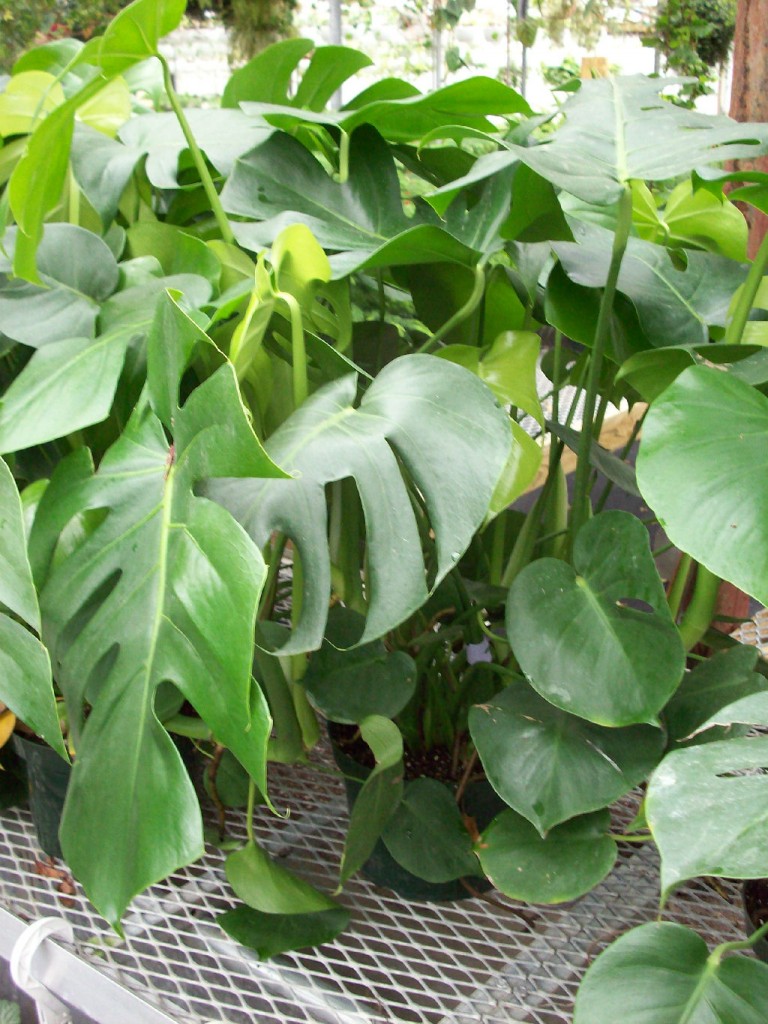





The Split Leaf Philodendron or Monstera deliciosa as it should be called, is a large popular easy- care houseplant that is not really a Philodendron at all. There is a great deal of confusion about what to call this plant because the various names have become inter-changeable. Other names for this plant include: Windowleaf Plant, Ceriman, and Mexican Breadfruit Plant. Whatever we call it, Split Leaf Philodendron or Monstera deliciosa, these plants are native to the jungles of Mexico, Panama, and India, have big glossy heart- shaped leaves that, as the plant matures, split from the leaf edge to the center vein. These slits in the leaves are called cuts. The Split Leaf Philodendron houseplant grows rapidly and often has leaves that are up to 3ft. long and 2ft. wide. If you want a big, tropical, low maintenance plant, Split Leaf Philodendron houseplants are perfect. The leaves, stems, and roots of Split Leaf Philodendron plants contain oxalic acid. All Philodendron plants are very poisonousPlants are a great addition to homes and offices, but it’s important to know whether your plants are dangerous to children, pets, or even adults. Some plants contain chemicals such as oxalates, solanine, glycosides, or alkaloid lycorine that may cause vomiting, nausea, diarrhea, swelling and redness of the mouth, throat, and lips, and trouble breathing. Touching parts of certain plants, especially the sap, may cause various skin irritations. The weight and age of the human or pet involved, and the part and amount of plant eaten determine how severe the reaction to the toxins will be. Although plants may be listed as non-toxic, they can still cause individual allergic reactions. If there is any question after a houseplant has been ingested or touched immediately call the Poison Control Center 1-800-222-1222 The Handbook of Poisonous and Injurious Plants [Paperback]is an excellent reference to keep around if you have young children and pets. and should be kept away from children and pets. The only part of a Split Leaf Philodendron Plant that is not poisonousPlants are a great addition to homes and offices, but it’s important to know whether your plants are dangerous to children, pets, or even adults. Some plants contain chemicals such as oxalates, solanine, glycosides, or alkaloid lycorine that may cause vomiting, nausea, diarrhea, swelling and redness of the mouth, throat, and lips, and trouble breathing. Touching parts of certain plants, especially the sap, may cause various skin irritations. The weight and age of the human or pet involved, and the part and amount of plant eaten determine how severe the reaction to the toxins will be. Although plants may be listed as non-toxic, they can still cause individual allergic reactions. If there is any question after a houseplant has been ingested or touched immediately call the Poison Control Center 1-800-222-1222 The Handbook of Poisonous and Injurious Plants [Paperback]is an excellent reference to keep around if you have young children and pets. is the delicious fruit it produces in nature.
These plants are considered poisonous and should be kept away from pets and children. Read more about common houseplants that are poisonous in Don’t Feed Me To Your Cat! A Guide to Poisonous Houseplants

Copyright © www.100flowers.win Botanic Garden All Rights Reserved